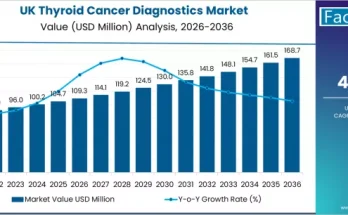In recent years, connected medical devices have emerged as a game-changer in the healthcare industry, revolutionizing patient care, diagnosis, and treatment. From wearable devices that monitor vital signs to implantable devices that deliver targeted therapies, these advancements have provided new opportunities for improving patient outcomes. However, with these innovations come significant cybersecurity concerns. Protecting the integrity and security of wireless portable medical devices is paramount to ensuring patient safety and maintaining the trust of healthcare providers and patients alike.
Understanding the Risks:
Connected medical devices, including infusion pumps, pacemakers, insulin pumps, and monitoring systems, are vulnerable to cyber threats. The potential risks associated with these devices include unauthorized access, data breaches, malicious attacks, and even the possibility of disrupting critical healthcare functions. Cybercriminals can exploit vulnerabilities in device software, weak network security, or even gain access through compromised healthcare systems.
Some examples related to cybersecurity concerns in connected medical devices:
- In 2017, the WannaCry ransomware attack impacted numerous healthcare organizations worldwide, including hospitals. This global attack affected numerous organizations worldwide, including hospitals and healthcare facilities. The incident shed light on the critical importance of timely software updates and security patches to protect connected medical devices and the overall healthcare infrastructure.
- A study by Unit 42, Palo Alto Networks threat intelligence team, found that many IoT devices used in healthcare, including connected medical devices, had significant vulnerabilities, with weak encryption and outdated software. The findings of this study highlight the critical importance of implementing robust security measures in IoT devices used in healthcare. It underscores the need for manufacturers to prioritize encryption protocols and ensure that software and firmware are regularly updated to address security vulnerabilities.
- The FDA issued a safety communication in 2019 about vulnerabilities in certain Medtronic insulin pumps that could potentially allow unauthorized access and alteration of insulin dosing. These vulnerabilities had the potential to enable unauthorized access and alteration of insulin dosing, posing risks to the health and safety of patients who rely on these devices to manage their diabetes. This raised significant concerns because insulin pumps are crucial medical devices used by patients with diabetes to manage their blood sugar levels.
Recent developments related to addressing cybersecurity concerns in connected medical devices:
- FDA Cybersecurity Guidelines: The U.S. Food and Drug Administration (FDA) has released guidelines to assist medical device manufacturers in implementing cybersecurity measures. These guidelines outline recommendations for pre-market and post-market cybersecurity considerations, including risk assessment, threat modeling, and vulnerability management. Moreover, this guidance is intended to provide recommendations to the industry regarding cybersecurity device design and labeling.
- EU’s Medical Device Regulation: The EU’s Medical Device Regulation (MDR) and In Vitro, Diagnostic Regulation (IVDR), which came into effect in May 2021, include specific requirements for medical device manufacturers regarding cybersecurity and risk management.
- Medical Device Security Assessments: Independent organizations, such as the Healthcare Information and Management Systems Society (HIMSS) and the Medical Device Innovation, Safety, and Security Consortium (MDISS), conduct security assessments on medical devices to identify vulnerabilities and promote best practices. These assessments help manufacturers and healthcare organizations strengthen device security.
- Integrated Security Solutions: Technology companies are developing integrated security solutions specifically designed for connected medical devices. These solutions offer features like real-time threat monitoring, anomaly detection, and encrypted communication, providing enhanced protection against cyber threats.
- Blockchain Technology: Blockchain technology is being explored as a potential solution for enhancing the security of 3d medical devices. By leveraging blockchain’s decentralized and tamper-resistant nature, healthcare organizations can secure data transmission, maintain audit trails, and verify the integrity of device software and firmware.
- Collaborative Initiatives: Industry collaborations and partnerships are emerging to tackle cybersecurity challenges. For instance, the Medical Device Cybersecurity Sharing and Analysis Organization (MD-COAST) fosters information sharing and collaboration among medical device manufacturers, healthcare providers, and cybersecurity experts to address cybersecurity threats collectively.
- Incident Response and Reporting: Organizations are developing incident response plans and establishing channels for reporting cybersecurity incidents involving medical devices. This enables swift responses to potential threats and helps ensure that vulnerabilities are identified, addressed, and shared with the wider healthcare community.
- Artificial Intelligence (AI) in Cybersecurity: AI-powered solutions are being deployed to proactively detect and respond to cyber threats. Machine learning algorithms can analyze network traffic patterns, identify anomalies, and alert healthcare providers about potential security breaches in real time, allowing for rapid mitigation.
- Regulatory Framework Enhancements: Regulatory bodies are continuously updating guidelines and regulations to address evolving cybersecurity concerns. For example, the European Union’s Medical Device Regulation (MDR) and In Vitro, Diagnostic Regulation (IVDR) include specific provisions related to cybersecurity and data protection.
Addressing Cybersecurity Challenges:
- Strong Device Authentication: Implementing robust authentication mechanisms, such as unique device identifiers and secure access controls, can help ensure that only authorized personnel can interact with connected medical devices. This prevents unauthorized access and reduces the risk of tampering.
- Regular Software Updates: Device manufacturers must stay vigilant and promptly address vulnerabilities by releasing software updates and patches. This includes addressing security vulnerabilities identified through vulnerability testing and collaborating with security researchers to strengthen the device’s security posture.
- Encryption and Data Protection: Encrypting sensitive data during transmission and storage is crucial to safeguard patient information. This helps prevent unauthorized access to personal health data and ensures patient privacy.
- Network Security: Healthcare organizations should establish secure networks, implementing strong firewalls, intrusion detection systems, and other security measures. Segregating the network infrastructure and separating medical devices from other systems can help minimize the risk of unauthorized access.
- Robust Risk Assessment and Compliance: Conducting thorough risk assessments, including identifying potential threats and vulnerabilities, is essential for developing effective cybersecurity strategies. Compliance with industry standards, regulations, and guidelines, such as those provided by the Food and Drug Administration (FDA) and the National Institute of Standards and Technology (NIST), can provide a framework for ensuring device security.
- User Awareness and Training: Healthcare professionals and device users should be educated about potential cybersecurity risks, best practices for device usage, and the importance of reporting any suspicious activity promptly. Training programs can help foster a security-conscious culture and promote the responsible use of connected medical devices.


